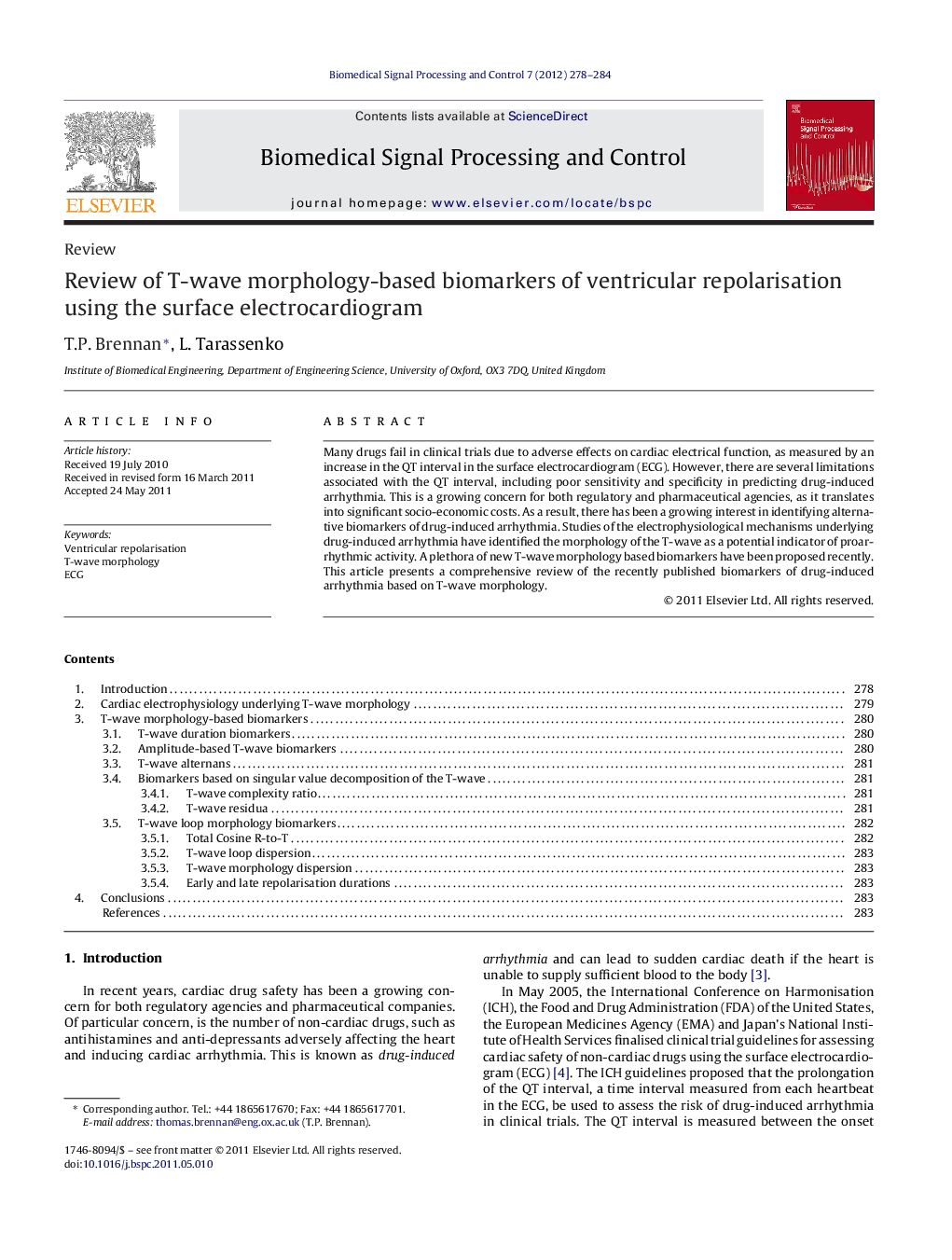| Article ID | Journal | Published Year | Pages | File Type |
|---|---|---|---|---|
| 558918 | Biomedical Signal Processing and Control | 2012 | 7 Pages |
Many drugs fail in clinical trials due to adverse effects on cardiac electrical function, as measured by an increase in the QT interval in the surface electrocardiogram (ECG). However, there are several limitations associated with the QT interval, including poor sensitivity and specificity in predicting drug-induced arrhythmia. This is a growing concern for both regulatory and pharmaceutical agencies, as it translates into significant socio-economic costs. As a result, there has been a growing interest in identifying alternative biomarkers of drug-induced arrhythmia. Studies of the electrophysiological mechanisms underlying drug-induced arrhythmia have identified the morphology of the T-wave as a potential indicator of proarrhythmic activity. A plethora of new T-wave morphology based biomarkers have been proposed recently. This article presents a comprehensive review of the recently published biomarkers of drug-induced arrhythmia based on T-wave morphology.
► We review T-wave morphmology biomarkers based on the surface electrocardiogram. ► We discuss the performance of these biomarkers in assessing cardiac risk of drug-induced arrhythmia. ► We discuss the physiological link of the T-wave biomarkers under review.
